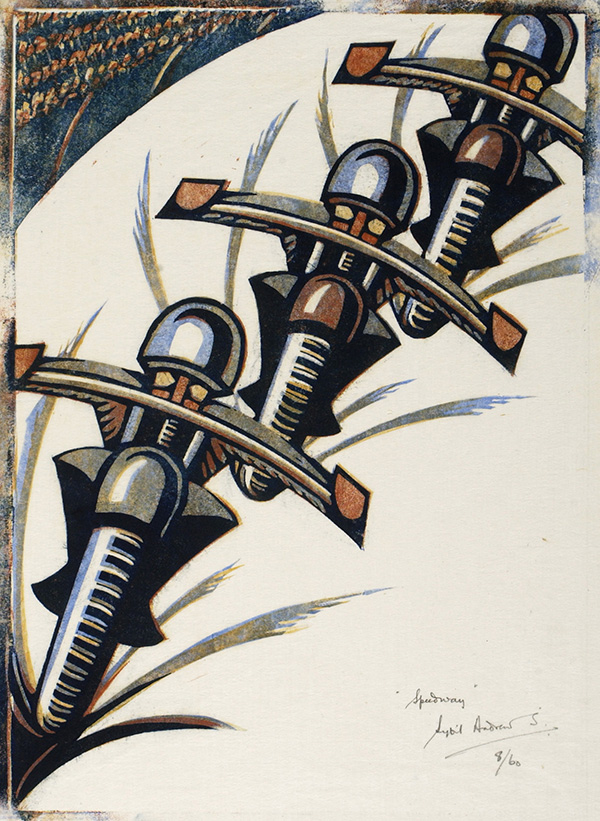—

exhibition Details
One of the most remarkable episodes in British printmaking is the rise of the humble linocut in the 1930s. English artist and teacher Claude Flight championed the linocut and in the process attracted many talented students to his classes at London's Grosvenor School of Modern Art. Speed & Flight includes the works of his most gifted students – artists such as Cyril E Power and Sybil Andrews, Ethel Spowers and Lill Tschudi.
With their bold colours and dynamic rhythms, these colour linocuts showing commuter-filled escalators and whizzing rollercoasters vividly evoke the speed and movement of the modern machine age. Flight and his followers combined the bright colours, geometric forms and rhythmic vitality of Art Deco with Italian Futurism's need for speed. Speed & Flight reveals how the group captured a sense movement through the themes of a city's energy, physical work, sport and leisure.
A democratic medium for the modern age, Flight argued that the group's linocuts should be sold for no more than the price paid 'by the average man for his daily beer or his cinema ticket'. First exhibited at London's Redfern Gallery in the late 1920s and designed to fit on an inner-city apartment wall, these artworks soon found their way into the collections of major public museums.
New Zealander Sir Rex Nan Kivell gifted these artworks to Auckland Art Gallery Toi o Tāmaki in 1953, and they are part of a much larger collection of art by leading British modernists.
Image: Sybil Andrews, Speedway, 1934, Auckland Art Gallery Toi o Tāmaki, gift of Rex Nan Kivell, 1953
- Date
- —
- Curated by
- Julia Waite
- Location
- Level 1
- Cost
- Free entry





















